A guide to FX spot trading

FX spot trading means speculating on the price movement of currency pairs at their current price. Learn more about what it is, how it works, and how to do it yourself.
Create an account Open a demo account
What is spot trading?
Spot trading involves buying and selling financial derivatives, such as currency or commodity CFDs at the spot price – the current market price for immediate delivery. This differs from the futures price, which is the agreed-upon price for a transaction to occur at a later date.
When spot trading with derivatives, settlement typically occurs instantly, reflecting real-time price movements. However, in highly illiquid markets, there can be delays in execution. Unlike futures contracts, spot trading focuses on immediate price speculation, and without the need to take ownership of the underlying asset.
What is spot forex trading?
Spot forex trading involves speculating on the real-time price movements of currency pairs without taking ownership of the actual currencies. Traders aim to profit from the difference between the opening and closing prices of a currency pair, by choosing whether a pair will rise or fall in value. Using leverage, or margin trading, spot forex trading allows you to control larger positions with a smaller deposit, amplifying potential gains or losses.
Spot forex trading: basic concepts
Understanding forex spot trading requires learning about essential concepts such as the composition of an fx pair, leverage, risk management and technical analysis – as well as how to bring these factors together to execute your trade.
Currency pairs
Forex trading involves two currencies, a base currency and a quote currency (e.g. EUR/USD). The price of the pair represents how much of the quote currency is needed to buy one unit of the base currency.
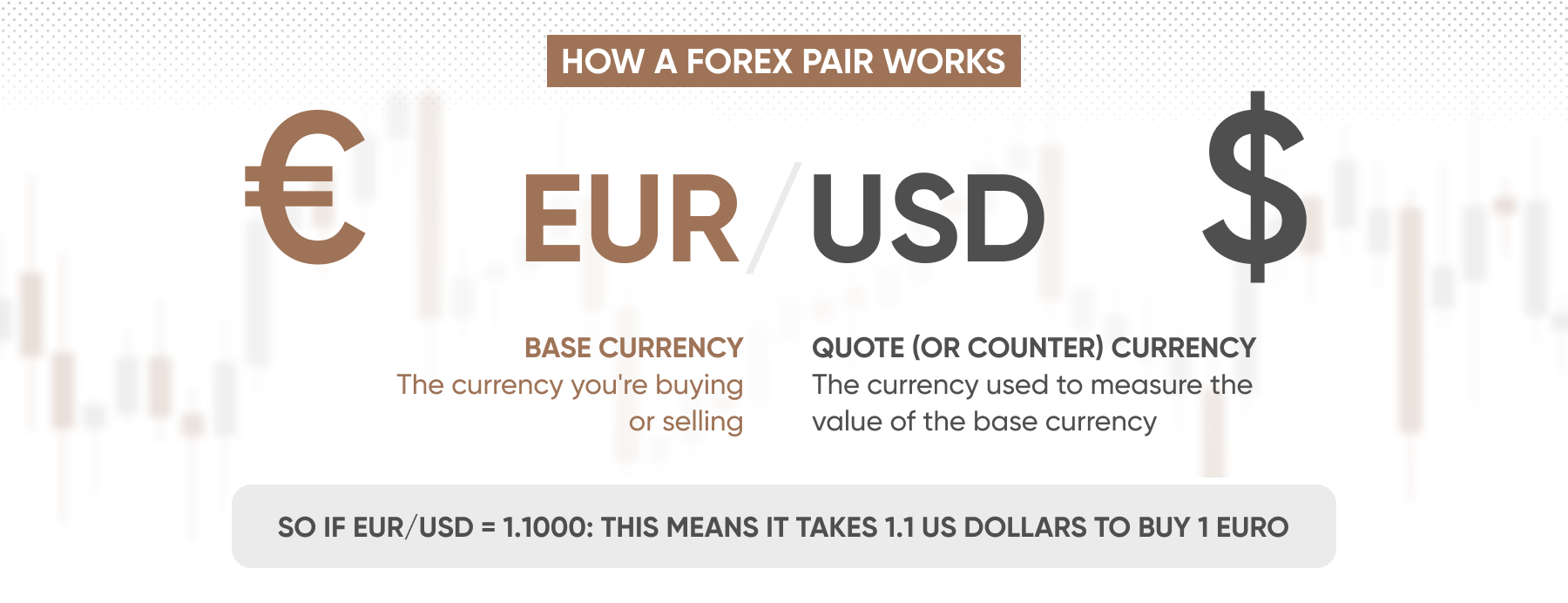
Leverage
Spot forex trading is leveraged, meaning you can control a larger position with a smaller amount of capital (margin). This amplifies both potential profits and losses.
Risk management
Traders often use stop-loss orders to limit losses and take-profit orders to secure profits at predetermined price levels, as part of a risk management strategy.
Going long or short
Go long (buy) if you believe the base currency will rise in value compared to the quote currency. Go short (sell) if you expect the base currency to fall in value.
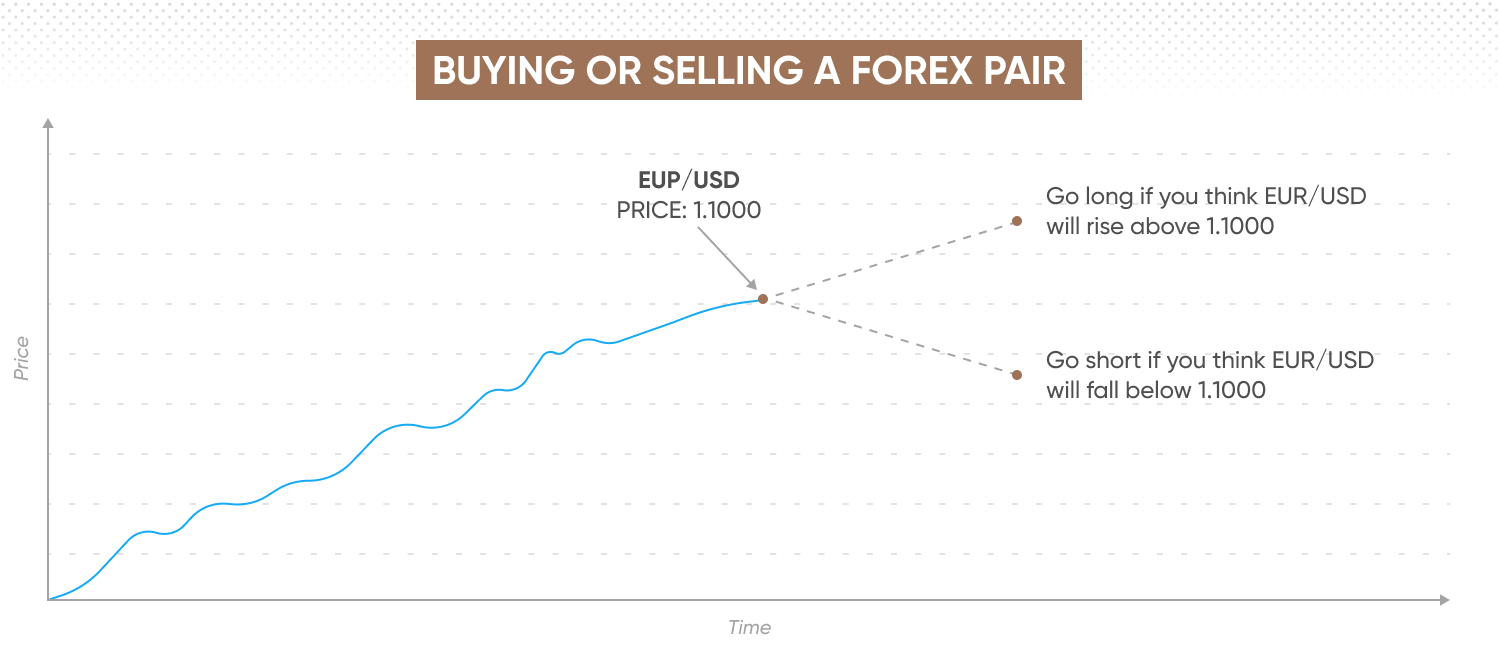
Instant execution
Trades are executed at the current spot price, and profits or losses are realised based on the difference between the price at which you open and close the trade.
Real-time market
Spot forex operates 24 hours a day, five days a week, across global forex markets, allowing for real-time trading and opportunities around the clock.
How is spot forex trading done?
1. Choose a broker
Start by selecting a broker that supports the instruments and markets you want to trade, such as CFDs, stocks, or forex, and offers essential tools like leverage, stop-loss orders, and technical analysis features. Once you’ve chosen one and your account is improved, it’s time to deposit funds.
2. Choose a forex pair to trade
Next, select the forex pair you want to trade, based on your trading goals, using the search bar. EUR/USD is a popular choice, but you may also want to choose minor pairs like EUR/GBP, or exotic pairs like USD/ZAR, for diversification, potential higher volatility, or other reasons.
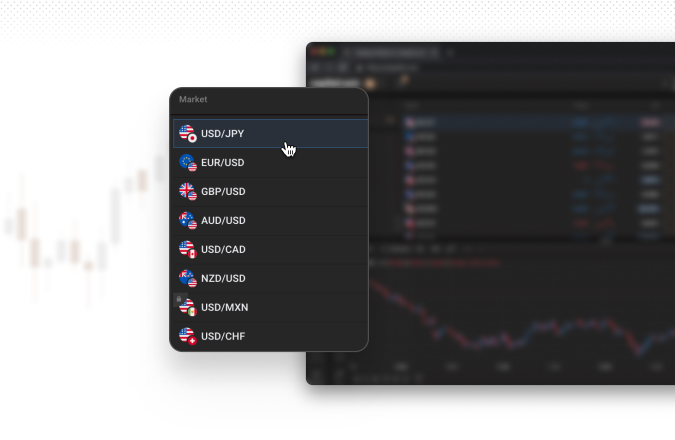
3. Analyse the market and price movements
Conduct a thorough market analysis, using tools like price charts and technical indicators such as MACD (shown below) to evaluate market trends and price fluctuations. For forex trading it’s also important to investigate specific fundamental drivers of markets, such as upcoming data on interest rates, GDP figures, and inflation. These techniques can help you decide whether to go long (buy) or short (sell).
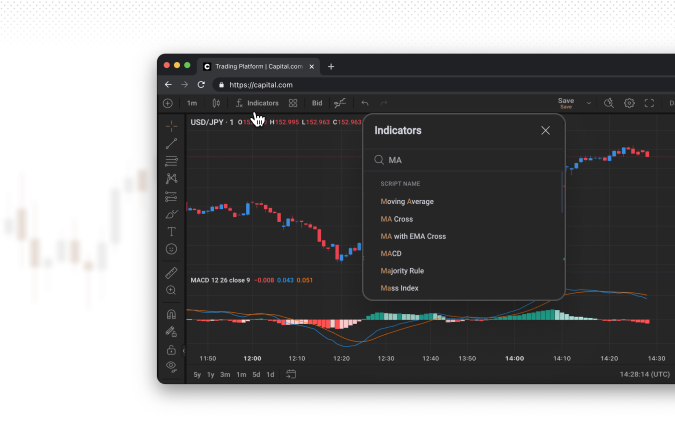
Past performance is not a reliable indicator of future results.
4. Decide on leverage
Before placing the trade, decide whether the default leverage for the market you’re trading is right for you. Leverage allows you to control a larger position with a smaller amount of capital, but it increases both potential gains and risks. This can be done in the ‘Trading options’ section after clicking on the LIVE button in the top right of the desktop platform. On the app, this feature is in the ‘My accounts’ section.
Find out more about leverage (margin trading).
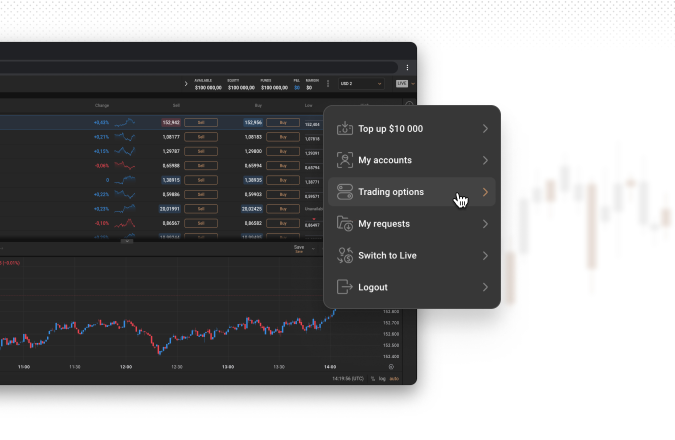
Past performance is not a reliable indicator of future results.
5. Set a stop-loss* for risk management
As part of your order setup, determine your stop-loss level* to manage risk. A stop-loss will automatically close your trade if the market moves against you by a certain amount, helping to limit losses.
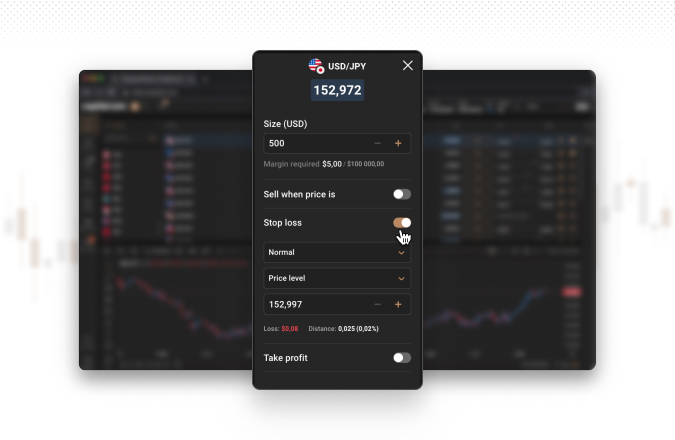
Past performance is not a reliable indicator of future results.
*Stop-losses are not guaranteed.
6. Place the market order
After setting your leverage and stop-loss, place the market order on your trading platform. Enter a buy order if you expect the price to rise (shown below), or a sell order if you expect the price to fall.
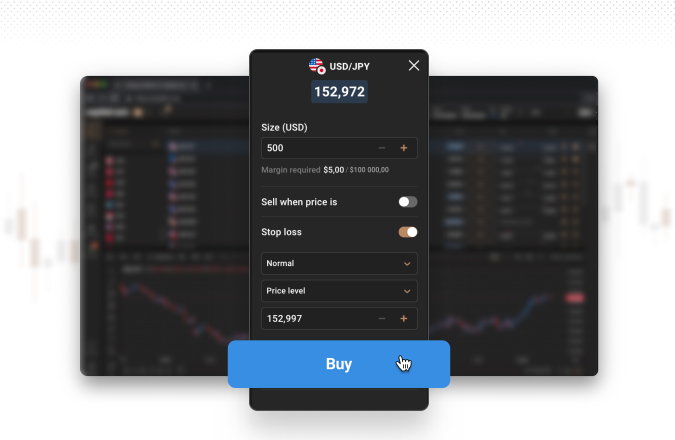
Past performance is not a reliable indicator of future results.
7. Monitor the trade
After placing the trade, monitor market conditions and price movements to assess how your position is performing. Be ready to adjust your strategy if the market signals a change.
8. Close the trade
When your profit target is reached, or if market conditions change, close your position.
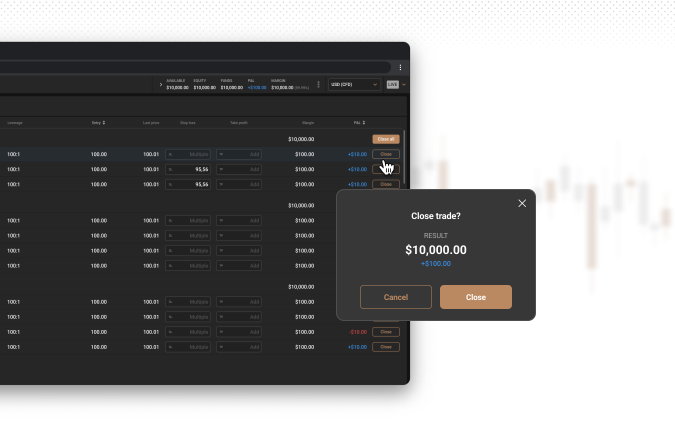
Past performance is not a reliable indicator of future results.
Forex spot trading example
- Let’s say you think the euro will rise in value against the US dollar. You decide to buy the EUR/USD currency pair at a current spot price of 1.1000, meaning 1 euro is worth 1.1 US dollars.
- Based on your analysis, you anticipate that an upcoming European Central Bank (ECB) meeting could support the euro. However, to protect yourself against unexpected volatility, you place a stop-loss at 1.0950. This stop-loss is placed just below a key technical support level, in case the market moves against you.
- If the ECB meeting boosts the euro and EUR/USD rises to 1.1200, you can close your position, profiting from the 200-pip increase. But if the meeting causes a negative reaction and the price falls to your stop-loss at 1.0950, your trade will automatically close, limiting your loss to 50 pips.
Need more support? Try our step-by-step forex course to guide you through the basics to the advanced concepts. Explore potential profits and losses on your forex CFD trades with our free forex profit calculator.